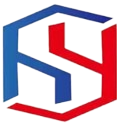
إليك تفاصيل المكونات الرئيسية وكيفية عمل شاشات TFT LCD:
طبقة الكريستال السائل:
- يتكون قلب شاشة LCD من طبقة من البلورات السائلة. هذه مركبات عضوية يمكنها التحكم في مرور الضوء. وهي في حالتها الطبيعية مرتبة بشكل لا يسمح بمرور الضوء من خلالها. الركائز الزجاجية:
- تقع طبقة الكريستال السائل بين طبقتين من الركائز الزجاجية. هذه الركائز الزجاجية عادة ما تكون شفافة. بنية البكسل:
- مرشحات الألوان: الإضاءة الخلفية:
- تستخدم معظم شاشات TFT LCD مصدر إضاءة خلفية لإضاءة الشاشة. يمكن أن يكون هذا مصباح فلورسنت أو، وهو الأكثر شيوعًا في شاشات العرض الحديثة، الثنائيات الباعثة للضوء (LEDs). تشرق الإضاءة الخلفية من خلال طبقة الكريستال السائل لإنتاج الصورة المرئية. ترانزستورات الأغشية الرقيقة (TFTs):
- يرتبط كل بكسل بترانزستور ذو غشاء رقيق. تعمل هذه الترانزستورات كمفاتيح فردية تتحكم في كمية الشحنة المرسلة إلى البلورات السائلة. يتيح هذا التحكم الدقيق جودة صورة أفضل وأوقات استجابة أسرع مقارنة بتقنيات LCD السابقة. Most TFT LCDs use a backlight source to illuminate the display. This can be a fluorescent lamp or, more commonly in modern displays, light-emitting diodes (LEDs). The backlight shines through the liquid crystal layer to produce the visible image.
- Thin-Film Transistors (TFTs): Each pixel is associated with a thin-film transistor. These transistors act as individual switches that control the amount of charge sent to the liquid crystals. This precise control allows for better image quality and faster response times compared to earlier LCD technologies.
TFT LCDs offer several advantages, including high resolution, sharp image quality, and relatively low power consumption. They are widely used in various applications due to their versatility and ability to provide vibrant and detailed displays. However, newer display technologies like OLED (Organic Light Emitting Diode) are gaining popularity for certain applications due to their improved contrast ratios, thinner profiles, and flexibility.


